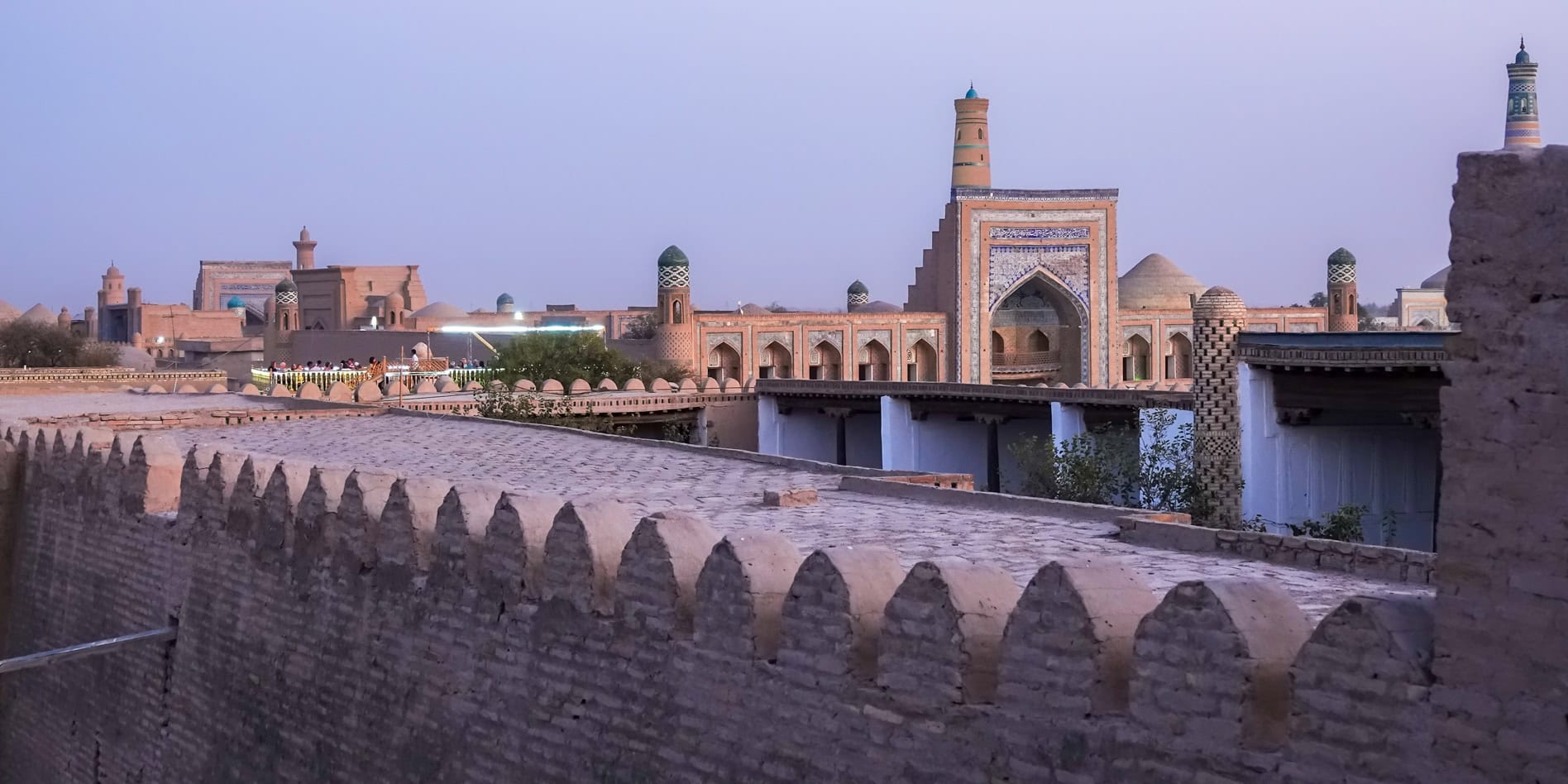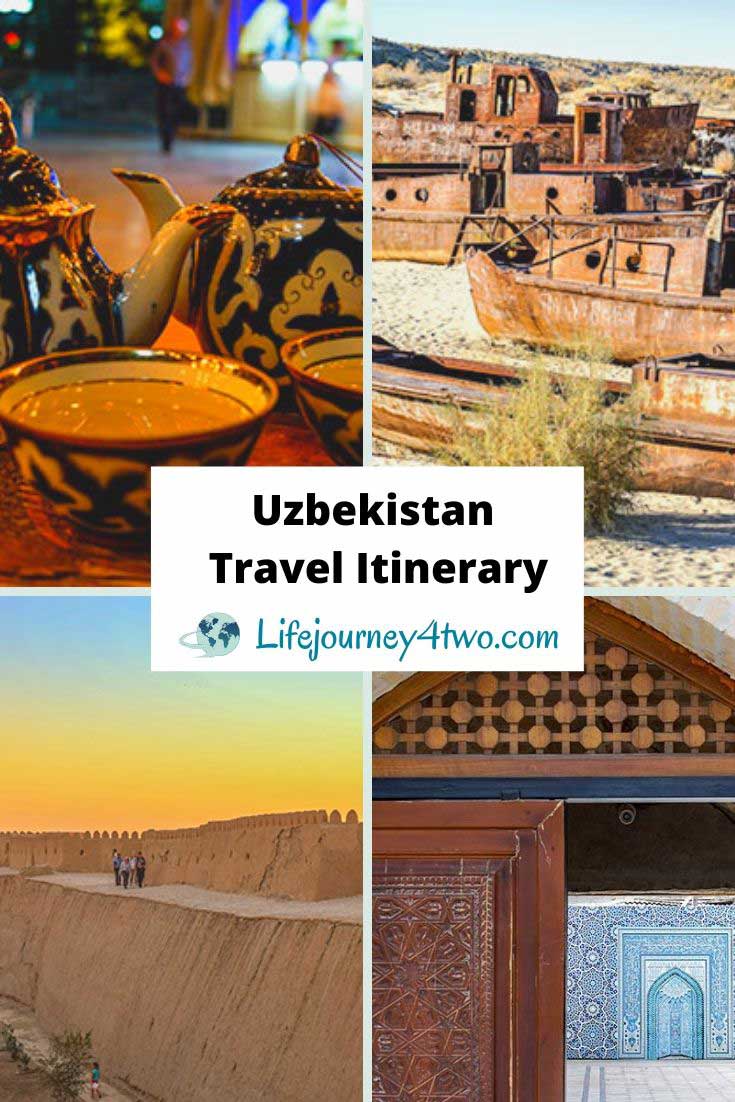Embark on a two-week journey that takes you through the heart of Uzbekistan’s ancient and modern marvels.
This two-week Uzbekistan itinerary immerses you in the vibrant history and culture of the Silk Road, from the historic splendour of Samarkand, Tashkent, Bukhara, and Khiva to the poignant Aral Sea ship cemetery and the vibrant city of Urgench.
From stunning madrasahs and towering minarets to lively local bazaars, this guide maps out your journey – from transport to accommodation – ensuring a smooth and enjoyable travel experience.
For those planning a trip to Uzbekistan, our additional Practical Uzbekistan Travel Tips and Guide covers everything you need to know, from booking trains and using credit cards to currency exchange, SIM cards, travel safety, food, accommodation, and more.
During the planning of this trip, we were unsure of how much time to allocate. Two weeks was the right amount of time, allowing us to spend at least a few nights at each location without rushing between places.
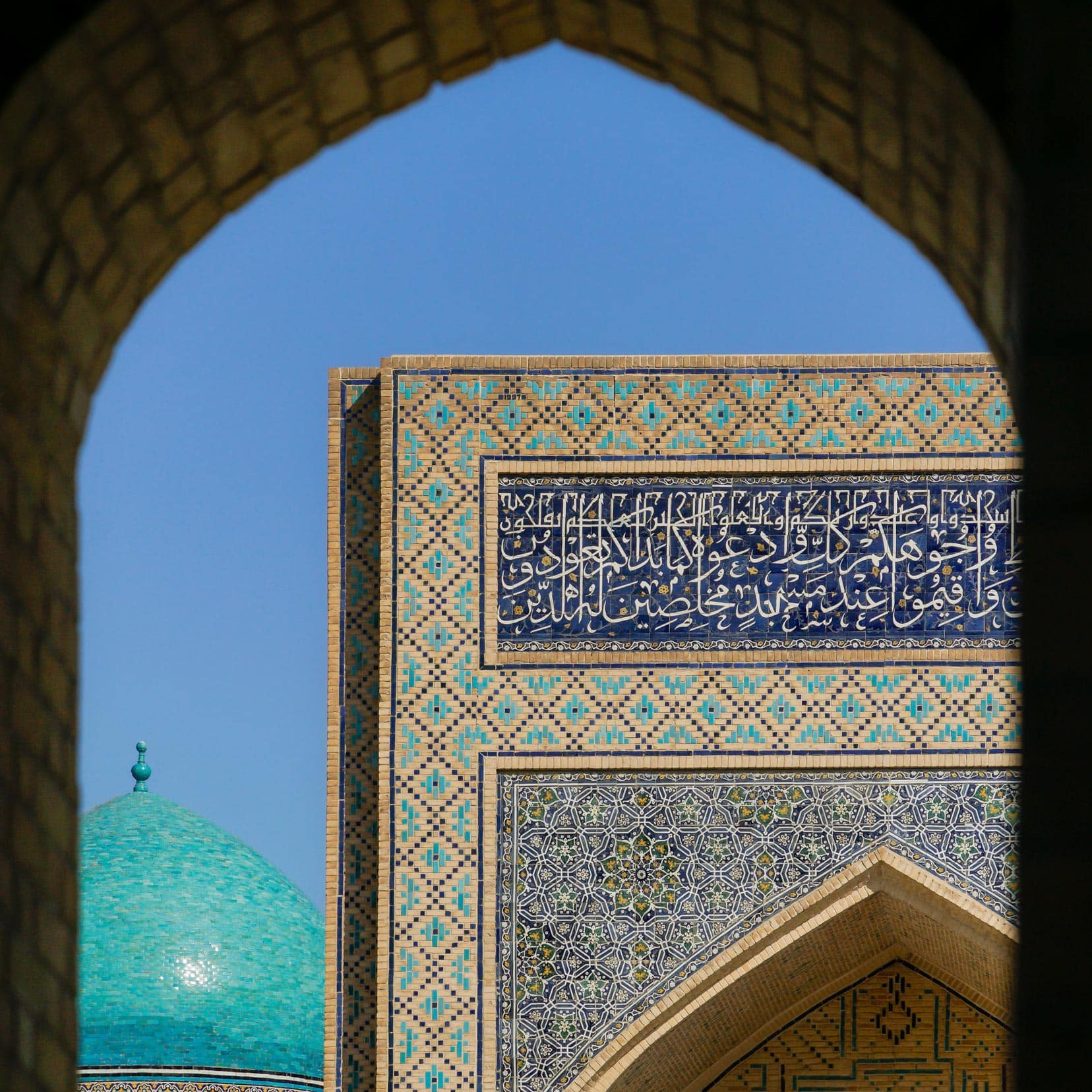
🐫 2-Week Uzbekistan Itinerary in a Nutshell
This itinerary can be adjusted from 1 to 3 weeks, depending on your time. Our adventure spanned 2 weeks, during which we crossed the country by train, taxi, and plane.
Here’s our 14-day itinerary:
- Day 1: Tashkent
- Days 2-4: Samarkand (from Tashkent: 310 km)
- Days 5-7: Bukhara (Travel from Samarkand: 270 km)
- Days 8-10: Khiva (Travel from Bukhara: 430 km)
- Day 11: Muynak and the Aral Sea Ship Cemetery (Travel from Khiva, one-way: 380 km)
- Day 12: Urgench (Travel from Khiva: 32 km) | Flight to Tashkent from Urgench (2 hours, via Bukhara)
- Days 13-14: Tashkent
Find detailed information in the linked posts below, for each key stop.
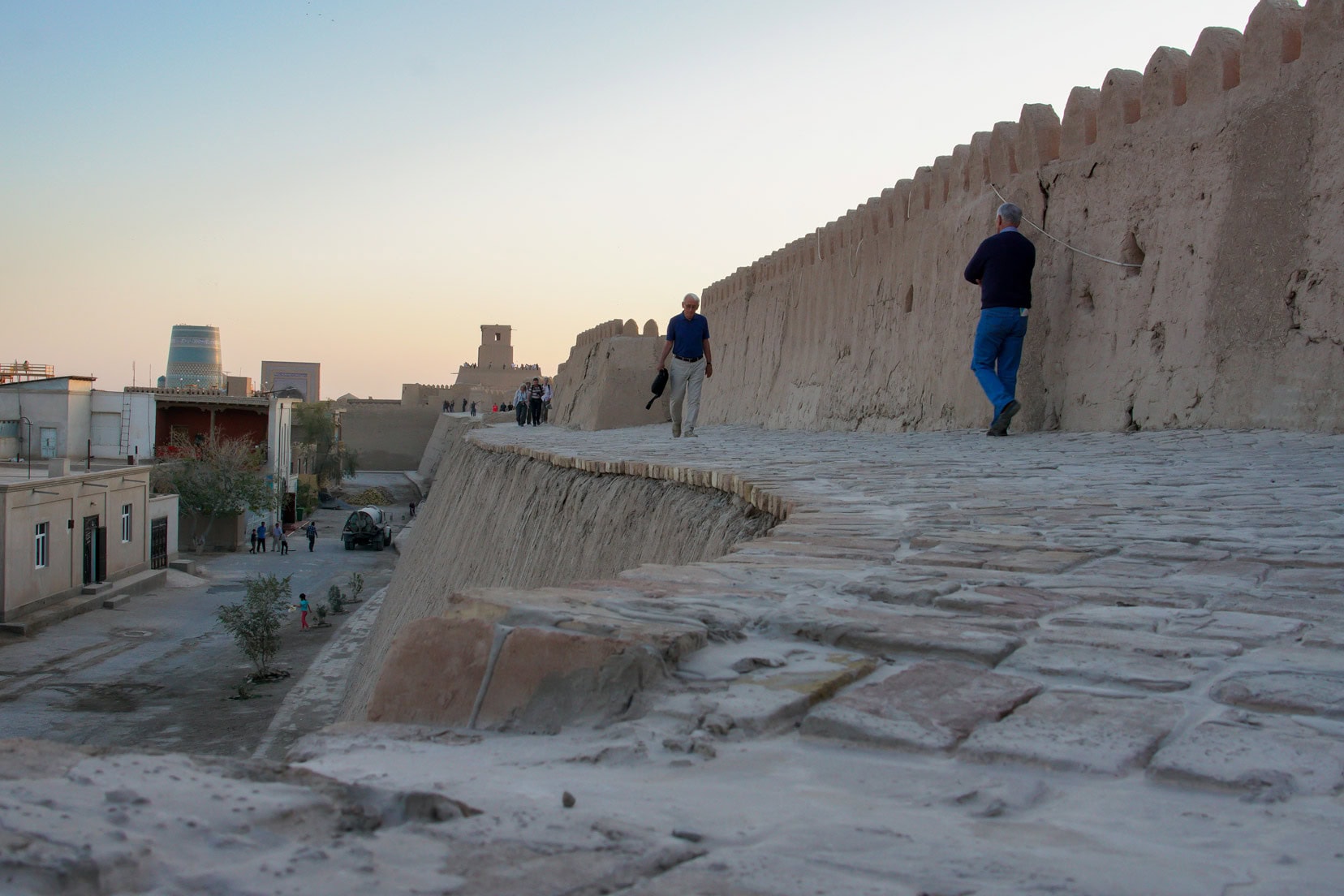
🕌 Tashkent
- Metro: The underground stations, built in 1966, are beautifully designed with metal, marble, granite, alabaster, and glass. Each station is a unique piece of art.
- Uzbekistan Hotel: This Soviet-era hotel, built in 1974, has 243 rooms on 16 floors and is located in the centre of town.
- Chorzu Bazaar: A bustling market selling bread, spices, fruits, and vegetables.
- Plov Centre: A traditional Plov restaurant located near Habib Abdullayev Metro station.
- Museums: State Museum of History, State Museum of Art, Amir Timur Museum, Museum of Applied Art, and Tashkent Museum of Railway Technics.
- Tashkent City Tour: A guided tour covering major attractions.
🕌 Samarkand
- Registan Square: Home to three ancient madrasahs – Ulughbek, Sherdor, and Tilla-Kori.
- Bibi Khanym Mosque and Mausoleum: Once one of the largest mosques in the world.
- Siab Bazaar: The largest market in Samarkand, ideal for morning visits.
- Shah-i-Zinda Complex and Cemetery: A series of mausoleums dating back to the 12th century.
- Amir Temur Mausoleum: The resting place of the famous warrior and his family.
🕌 Bukhara
- Chor Minor: A small madrasah with four blue-domed minarets.
- Lyabi Hauz Pool: A historical pool surrounded by alfresco dining options.
- Madrasah Nadir Devon Begi and Hodja Nasruddin Statue: There are traditional stalls nearby, and a statue said to bring good luck.
- Kalon Minaret, Poi Kalyan Mosque, and Miri-Arab Madrasah: A trio of historical buildings.
- Samanid Mausoleum: A small medieval crypt in Samani Park.
- Bolo Haouz Mosque: An 18th-century mosque with colourful wooden columns.
- The Ark: A massive citadel with museums.
🕌 Khiva
- Itchan Kala: The walled inner city with many attractions, including the Duma Mosque and Kalta Minor Minaret.
- Islam-Khoja Minaret: The tallest minaret in Khiva.
- Tosh Hovli Palace: A palace with artefacts and colourful mosaics.
- Sunset Walk: A walk along the city walls offering spectacular views.
🕌 Muynak and the Aral Sea Ship Cemetery
- Chilpik Kala: An ancient earthen tower with panoramic views.
- Nukus Art Museum: Featuring Avante-Garde Russian art.
- Mizdakhan Cemetery: A large cemetery with distinctive mausoleums.
- Muynak Museum: Showcasing the history of the Aral Sea.
- Aral Sea Ship Cemetery: Rusted ships on a desolate sandy terrain.
Practical Information
- ⛑Travel Insurance: Compare quotes from World Nomads & Safetywing
- 🏩 Accommodation: Book through Booking.com to find the best deals
- 🚗 Car Hire: Get quotes from DiscoverCars or Motorhome Republic
- 🥾Tours: Check out options on Viator
Final Tips
- Adjust the itinerary to fit your schedule.
- Avoid the Fergana Valley due to security issues.
- Leave a comment if you have other places of interest to add.
- Get the low-down with tips for travelling through Uzbekistan.
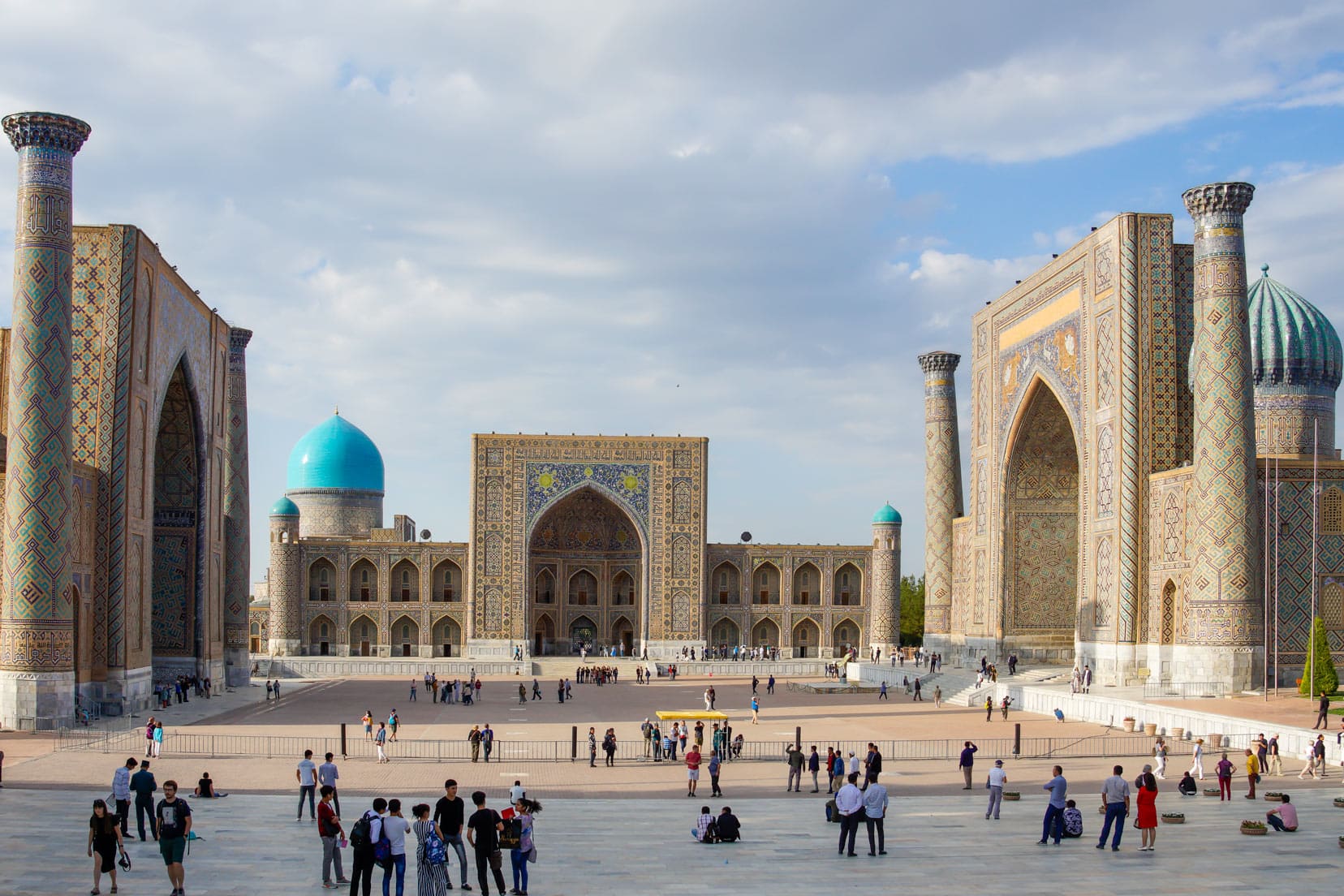
Uzbekistan Tours
If you want an even easier Uzbekistan Itinerary, consider this all-five-star rated Grand Uzbekistan Tour.
This 14-day tour includes accommodation and entry fees and covers all the main cities, Tashkent, Nukus, Khiva, Bukhara and Samarkand.
⭐️ Check out this tour and other Uzbekistan options here on Viator | ⏰ 14 days | ⭐️ 5/5 Star Reviews
Map: Uzbekistan Itinerary
Video: Uzbekistan Itinerary
Below is our video capturing the essence of our Uzbekistan trip, which includes visits to Tashkent, Samarkand, Bukhara and Khiva, as well as a day trip to the Aral Sea ship cemetery.
Best Places to See on This Uzbekistan Itinerary
#1: Taskent Itinerary
🏨 Accommodation Option: The Art Hotel
Tashkent, Uzbekistan’s capital, offers a fascinating mix of Soviet history and bustling local culture. Key highlights include the Tashkent Metro, known for its beautiful, themed stations that double as nuclear bunkers, and the iconic Uzbekistan Hotel, a prime example of Soviet brutalist architecture.
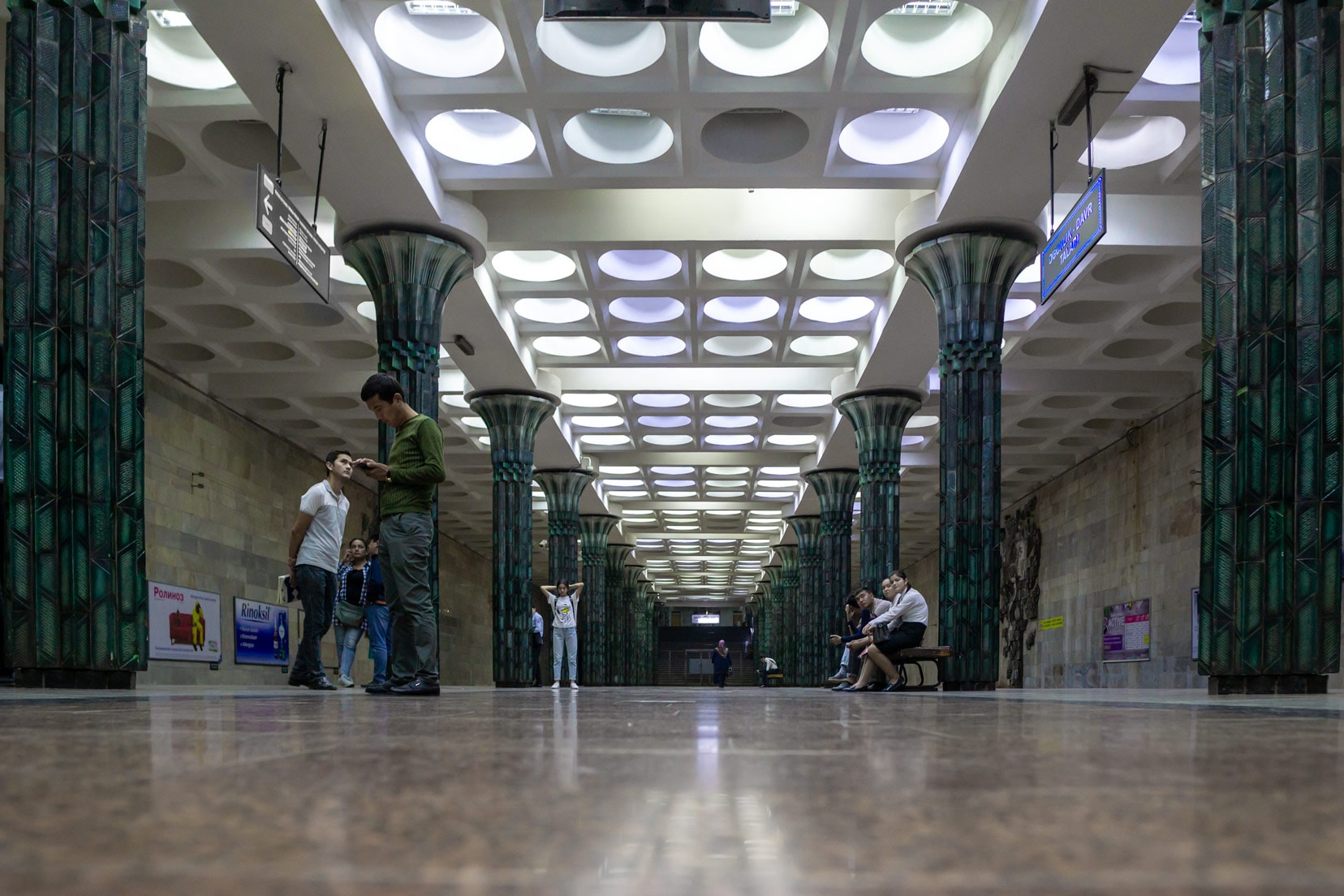
Don’t miss the Chorsu Bazaar, a lively market where traditional spices, bread, and produce fill the air with rich scents. For a taste of local cuisine, the Plov Centre serves the classic Uzbek dish made from rice and meat.
The city is also home to several museums, including the State Museum of History and the Amir Timur Museum, which provide deeper insights into Uzbekistan’s past.
🕌 For more detailed information and tips on exploring Tashkent, check out our comprehensive Tashkent Travel Guide.
To fully experience Tashkent, consider a guided city tour, which covers major attractions efficiently and enjoyably.
Tashkent Tour:
If you’d prefer to take a guided tour of Tashkent – check out this Tashkent City Tour.
👉 Book or find out more about this jam-packed tour of Tashkent | ⏰ 7-9 hours | ⭐️ 5/5 Star Reviews
⭐️⭐️⭐️⭐️⭐️ We had a great tour guide, very relaxed manner, not rushing around. The best way to see Tashkent in one day. – Apr 2024
⭐️⭐️⭐️⭐️⭐️ Great tour everyone should try it. We got to see lots of places that we would not see by ourselves. – Apr 2024
⭐️⭐️⭐️⭐️⭐️ Very Nice way to see the city and have some plov too! – June 2024
The train from Tashkent to Samarkand offers a seamless and straightforward connection for those continuing their journey.
Train Trip: Tashkent to Samarkand
Boarding the train at Tashkent’s South Railway Terminal is simple.
Present your passport and tickets, complete a brief security check, and follow the signs—or ask for help—to find the right platform.
The entire process is efficient and straightforward.
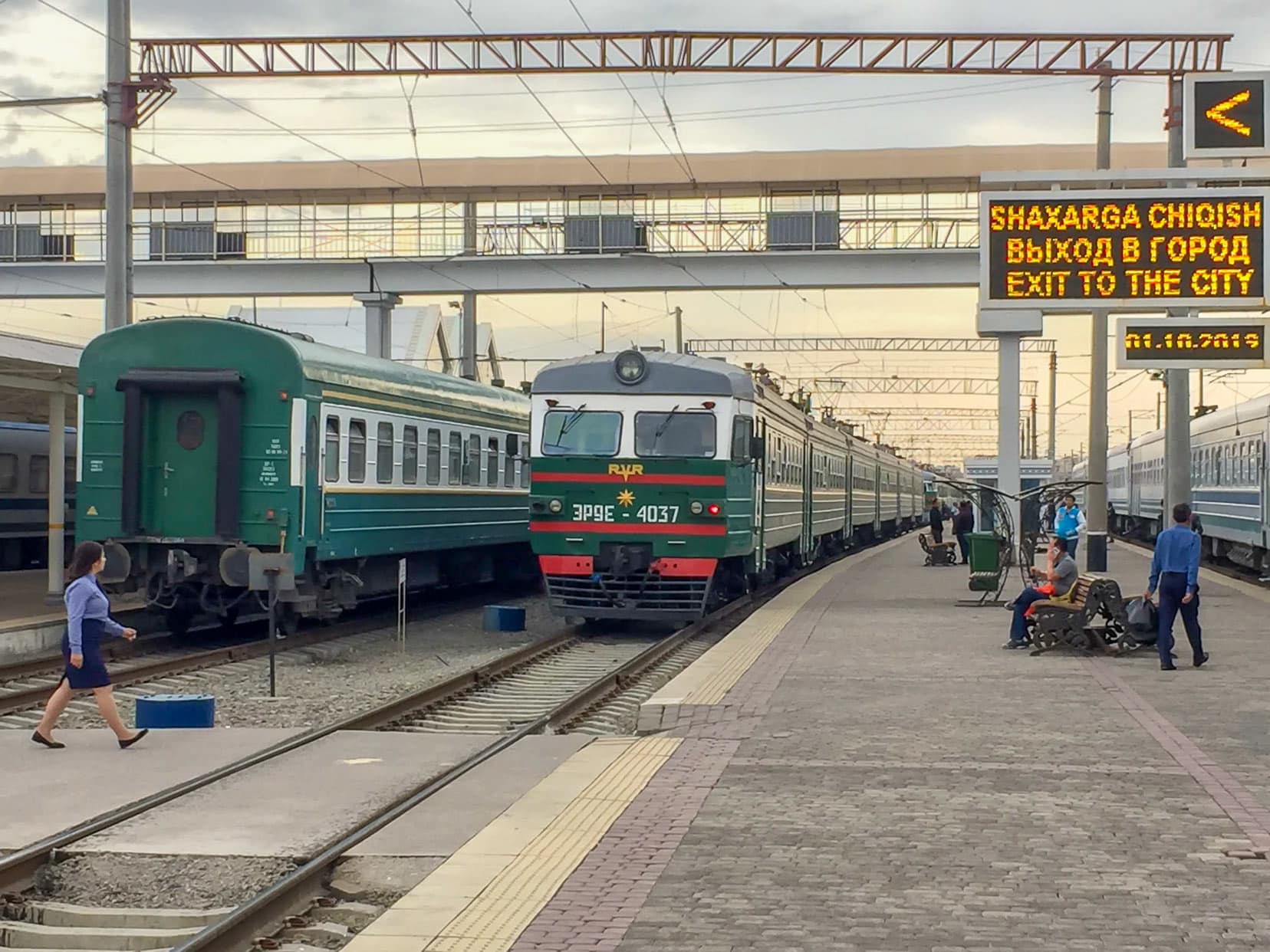
#2: Samarkand Itinerary
🏨 Accommodation Option: Imran&Bek
Samarkand, a city steeped in history dating back to the 8th century BC, showcases architectural diversity shaped by numerous cultures over millennia.
A highlight of your visit will be Registan Square, surrounded by three majestic madrasahs—Ulughbek, Sherdor, and Tilla-Kori—all dating back to the 15th century.
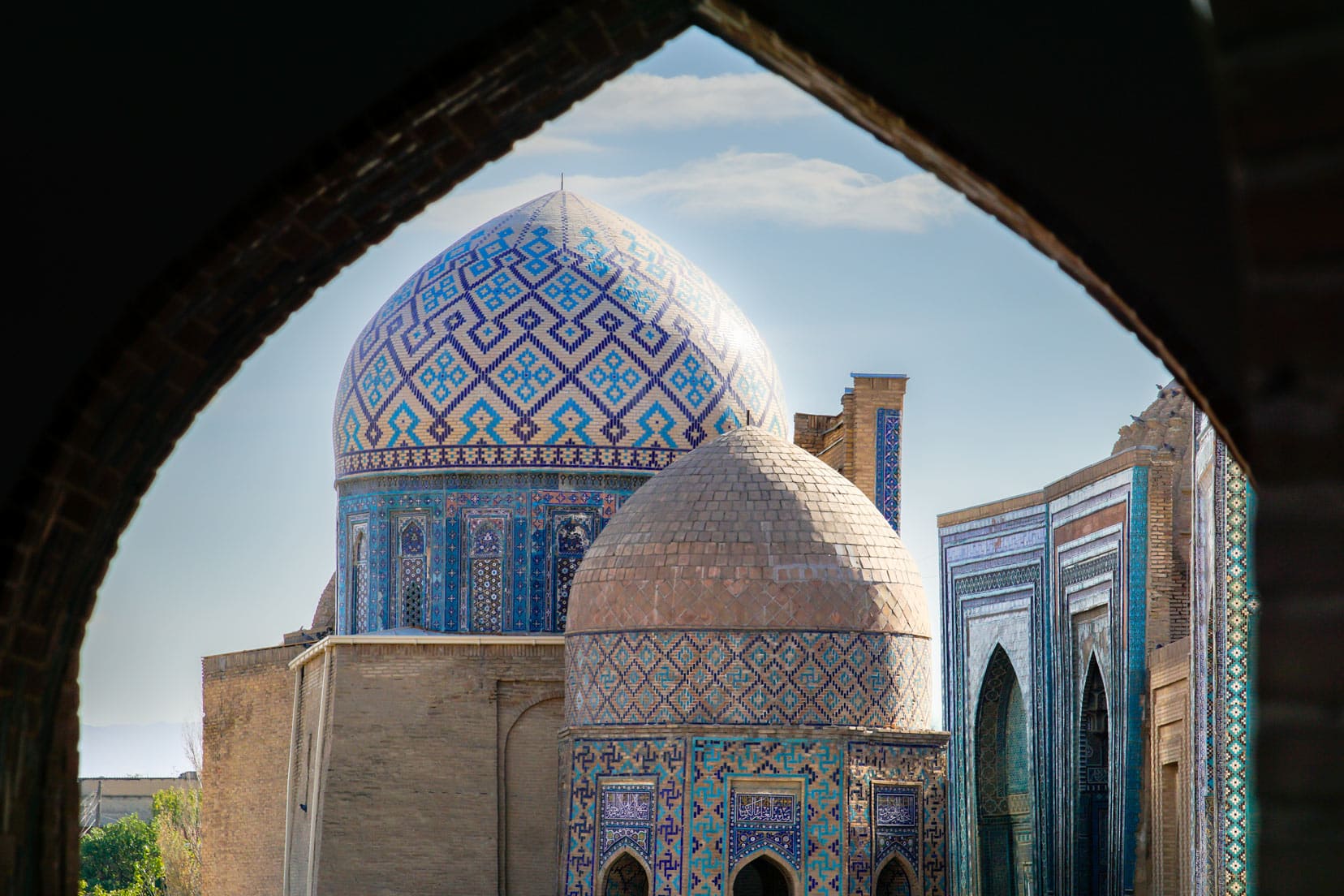
This UNESCO World Heritage Site, with its stunning courtyards and intricate designs, captures the essence of ancient educational institutions.
🕌 For more insights and detailed descriptions,
visit our comprehensive Samarkand Travel Guide.
Don’t miss the Bibi Khanym Mosque, once one of the world’s largest mosques, and the nearby Siab Bazaar, the largest market in Samarkand.
Explore the Shah-i-Zinda complex, a striking collection of mausoleums, and the Amir Temur Mausoleum, the resting place of the revered leader Amir Temur.
Samarkand Tour:
Don’t have much time on your hands? Check out this 5.5-hour city tour, rated 5⭐️.
⏰ Short on Time: 5.5 hour Walk/Drive Samarkand City Tour
| ⭐️ 5/5 Star Reviews | 🚙 Air-con vehicle | Pick-up included |
| ❌ No wheelchair accessibility |
Train Trip: Samarkand to Bukhara
Enjoy a comfortable 2.5-hour train journey from Samarkand to Bukhara, featuring security checks and an economy class as cozy as business class.
Onboard service includes food and drinks for purchase.

#3: Bukhara Itinerary
🏨 Accommodation Option: Meros Hotel
Bukhara, a museum town, boasts over 140 ancient monuments tracing back over 2000 years, making it a vital Silk Road trading post. Notable landmarks include:
- Chor Minor: A small madrasah featuring four iconic blue-domed minarets, known for a nearby market that sells war memorabilia and traditional Uzbek wares.
- Lyabi Hauz Pool: An ancient stone pool, now a popular spot for alfresco dining and enjoying traditional music.
- Madrasah Nadir Devon Begi and Hodja Nasruddin: Home to craft stalls and a statue believed to bring good luck to those who touch it.
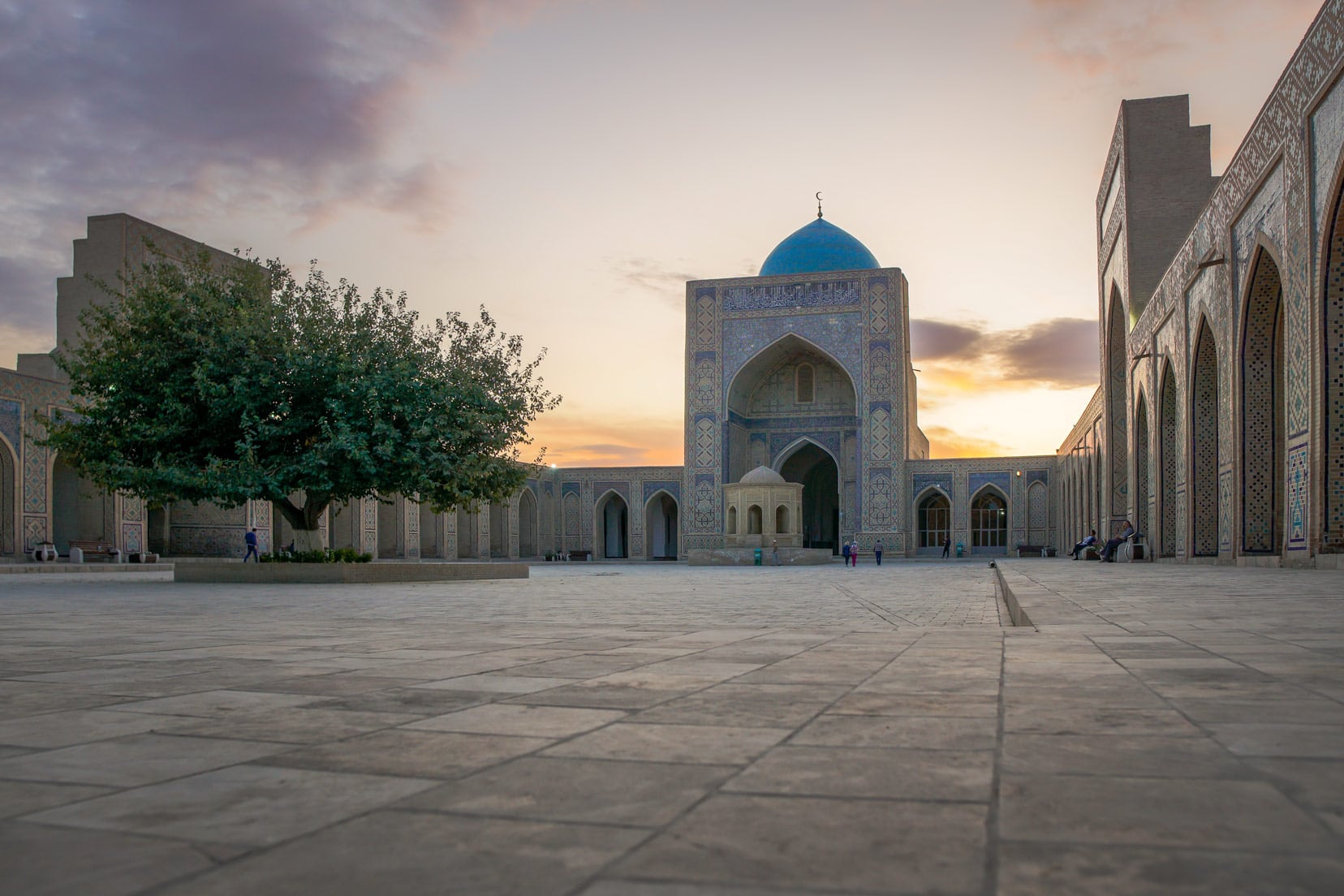
- Kalon Minaret, Poi Kalyan Mosque, and Miri Arab Madrasah: A complex that includes a mosque with a huge courtyard and a towering 12th-century minaret.
- Samanid Mausoleum: The oldest Muslim monument in Bukhara, remarkable for its symmetrical brick design.
- Bolo Haouz Mosque: An 18th-century mosque noted for its colourful wooden columns and intricate roof.
- The Ark: A massive 4th-century citadel with museums showcasing a collection of historical artefacts.
🕌 READ MORE: On the Best Things to Do in Bukhara
Each site exemplifies the city’s rich history and cultural depth, preserved through centuries of Silk Road exchanges.
Bukhara Tours:
Train Trip: Bukhara to Khiva
Travel from Bukhara to Khiva, with a brief 10-minute stop in Urgench, takes about 4 hours. Enjoy the comfort of Business Class, featuring plush leather seats at a reasonable price.
Upon arrival, a short 15-minute taxi ride will take you from Khiva train station to the historical Itchan Kala walled fortress.
#4: Khiva Itinerary
🏨 Accommodation Option: Xiva-Azim-Ota
Khiva, the northernmost city along the ancient Silk Road in Uzbekistan, is renowned for its well-preserved Itchan Kala, the inner-walled city.
Despite being smaller than other historic cities, Khiva offers a rich array of attractions:
- Duma Mosque: Notable for its 218 wooden columns and expansive indoor space with small garden areas.
- Kalta-Minor Minaret: Distinguished by its height of 29m and striking blue tiles, best viewed at sunset.
- Islam-Khoja Minaret: One of the newer structures, soaring to 57m.
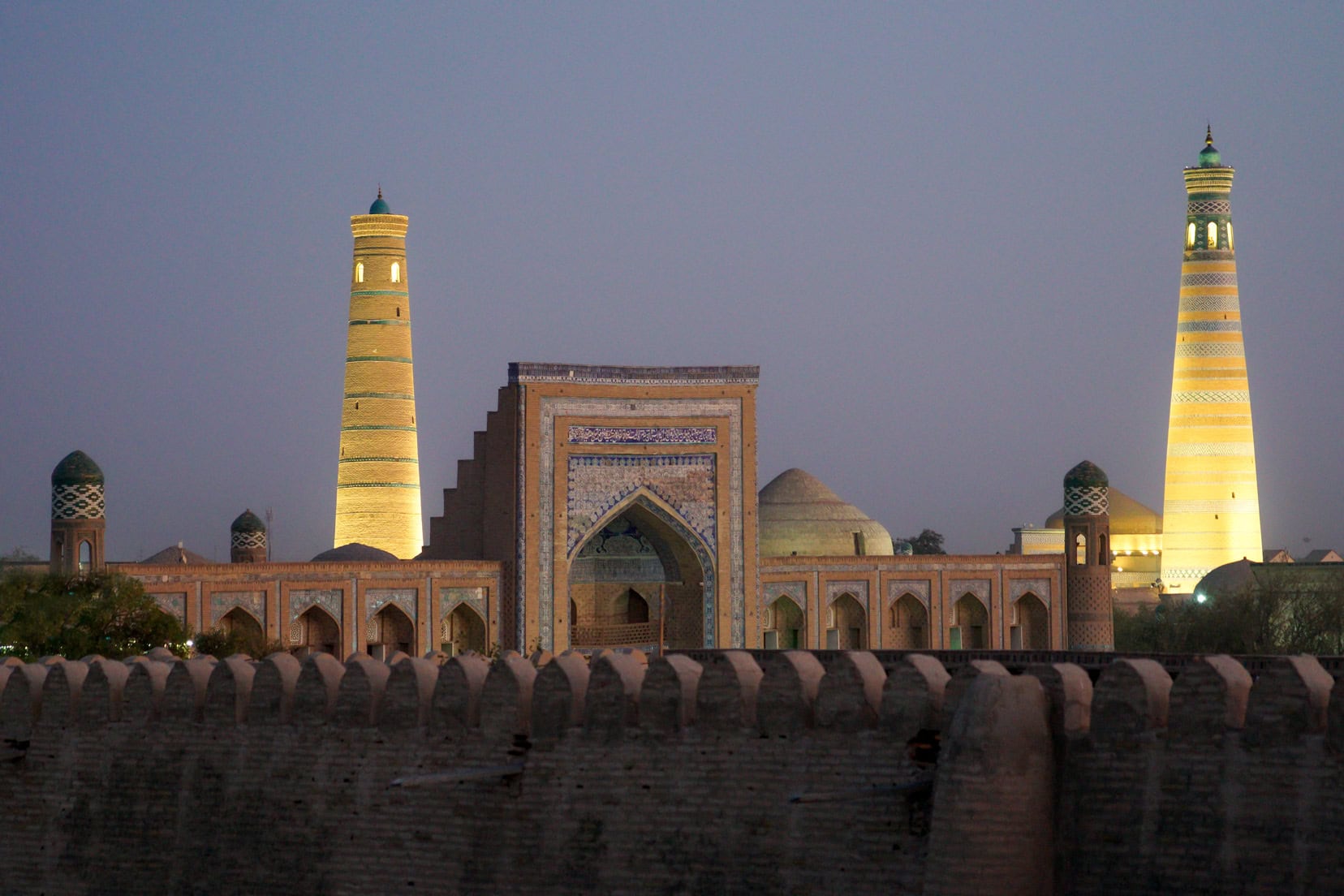
- Tosh Hovli Palace: Filled with artifacts and traditional designs, featuring a yurt in one of its courtyards.
- Khiva Graveyards: The city’s ancient burial sites, some under renovation, are embedded within the southwestern part of the city walls.
- Sunset Walk on the City Walls: A must-do for breathtaking views of the city and its minarets at sunset.
🕌 READ MORE: Top Things to do in Khiva
Khiva’s blend of historical architecture and cultural depth makes it an essential stop for any traveller exploring Uzbekistan’s Silk Road heritage.
Khiva Tours:
#5: Day Trip to Muynak and the Aral Sea Ship Cemetery
Explore the remnants of the Aral Sea and its surrounding attractions with a one-day trip, which can optionally extend to two days for a more thorough and relaxed experience. Highlights of this journey include:
- Chilpik Kala: An ancient earthen tower offering panoramic views over the flat desert terrain.
- Nukus Art Museum: Home to an extensive collection of Avant-garde Russian art and artifacts from Asia and the Middle East.
- Mizdakhan: A vast, historical cemetery featuring unique mausoleums and graves dating back to the 4th century.
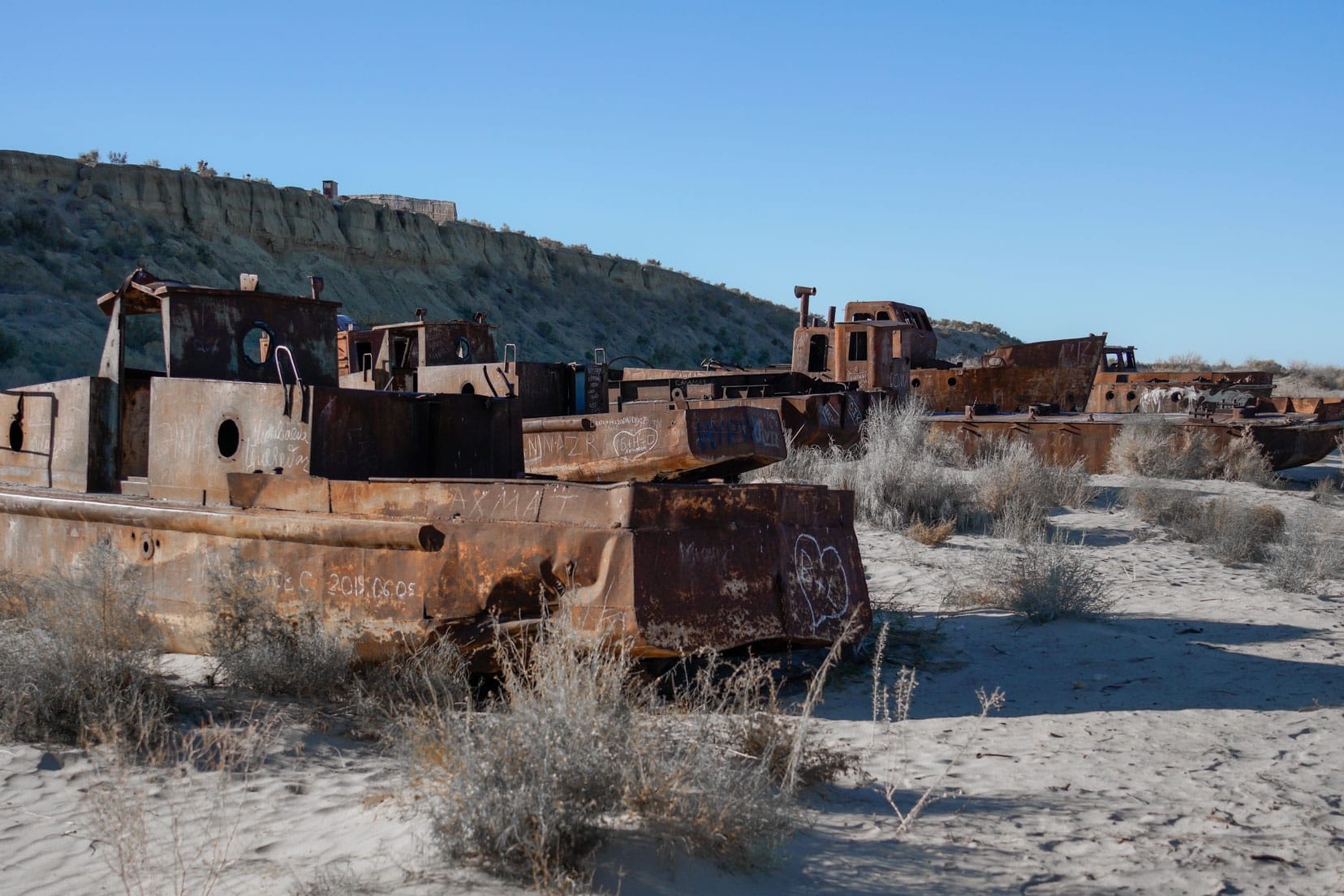
- Muynak Museum: Displays photographs and memorabilia depicting the Aral Sea’s former grandeur and subsequent ecological decline.
- Aral Sea Ship Cemetery: A poignant site where the rusted hulls of abandoned ships sit in a sandy desert, once the thriving shoreline of the Aral Sea.
🕌 READ MORE: Khiva to Aral Sea Day Trip
This trip covers approximately 800 kilometres, offering a profound insight into one of the 20th century’s most dramatic environmental disasters and the resilience of the local culture.
1-Day Tour:

1-Day Aral Sea Ship Cemetery Tour from Khiva
⭐️ I recommend this Full-day tour from Khiva to Muynak and Aral Sea Ship Graveyard ⭐️
(Includes: hotel pickup/drop-off; driver, sedan car, fuel and guide; full refund if cancelled up to 24 hours in advance)
2-Day Tour:

2-Day Aral Sea Ship Cemetery Tour from Khiva
⭐️
Aral Sea, Ustyurt Canyon, Muynak ship cemetery, Muynak and Savitsky museum, Chilpik Kala fortress
⭐️
Overnight: Yurt camp, Aral Sea shore (extra cost)
(Includes: hotel pickup/drop-off; driver, sedan car, fuel and guide; full refund if cancelled up to 24 hours in advance)
#5: Urgench
🏨 Accommodation Option: Ariya Hotel
Taxi Ride Khiva to Urgench
Opting for a more direct route, we took a taxi from Khiva to Urgench, which took about an hour.
This gave us ample time to briefly explore Urgench, a city known for its 20th-century monuments and appealing atmosphere.
Instead of a lengthy train ride back to Tashkent, we chose an easy 2-hour flight from Urgench via Bukhara to Tashkent.
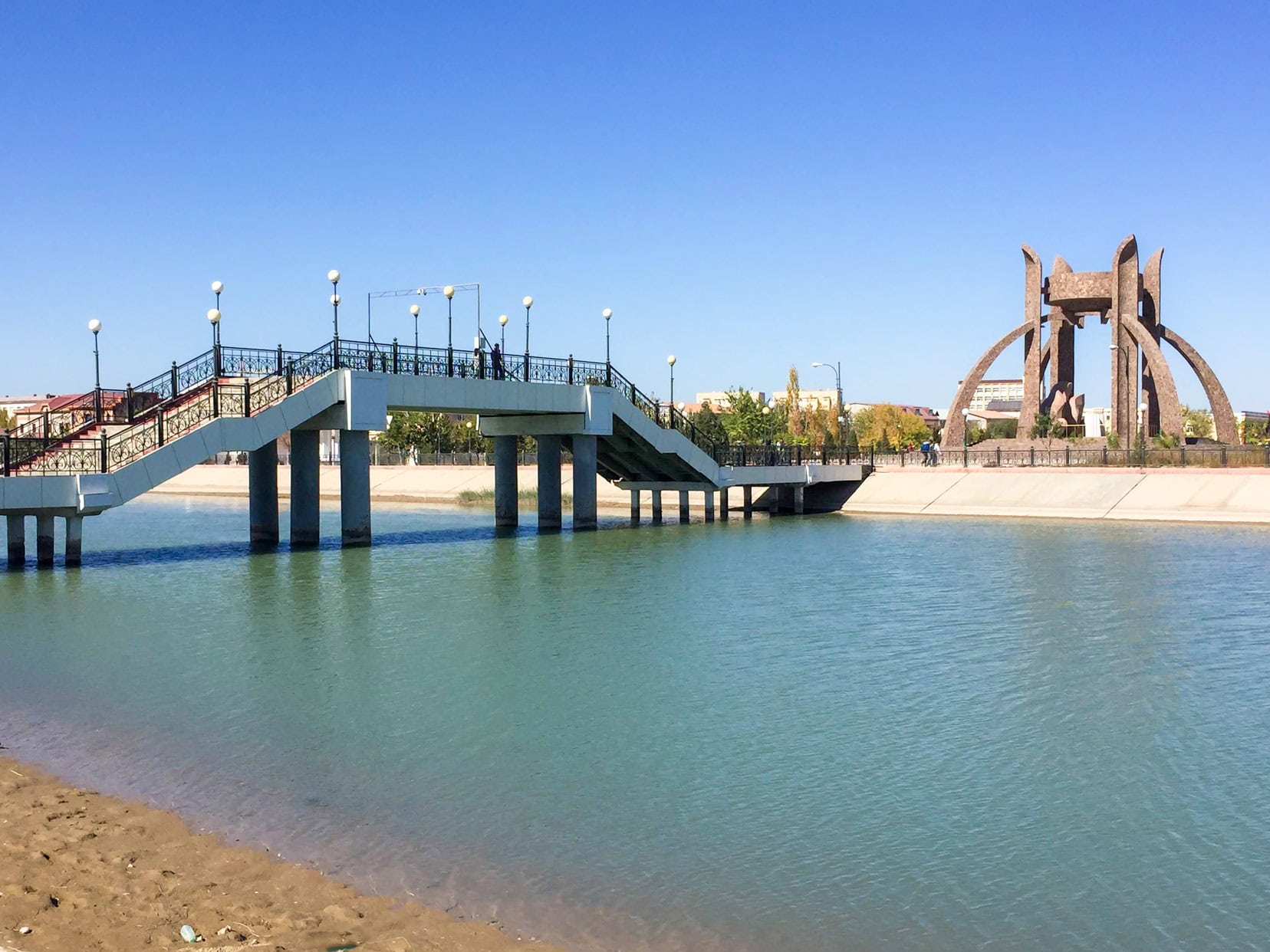
Uzbekistan 2 week Itinerary … That’s a Wrap
This comprehensive two-week itinerary across Uzbekistan can be extended to fit a longer travel schedule. We advise against shortening it if you wish to experience all the highlighted attractions thoroughly.
Note: We skipped visiting the Fergana Valley in the eastern part of the country due to heightened security concerns and the presence of mines. Please consult Smart Traveller for the latest updates before planning your visit.
Do you know of other noteworthy places in Uzbekistan that should be on this list? Please share them in the comments below.
We hope your journey through Uzbekistan is as memorable as ours was!
Have you visited Central Asia before? Any countries you would recommend? We’d love to hear from you – drop us a comment below.
Pin and Save for Later
Planning Your Travels?
These are the travel resources we recommend and use when planning our trips.
- 🚘 Car Hire: We use DiscoverCars.com
- Motorhome/Campervan Rental: We highly recommend the Motorhome Republic
- 🪪 Order your International Driver’s Licence online here
- 🛏 Book Accommodation: We use Booking.com to find accommodation that suits our budget
- 🐶 Pet Sitting/Pet Sitters: Check Out TrustedHousesitters here (Use our Discount code: LIFEJOURNEY25 for 25% off. )
- Activities and Experiences: Get Your Guide and Viator
- Travel Insurance: Safetywing or World Nomads
- 🥾 Travel Gear and Accessories: Check out our top picks here — Lifejourney4two page on Amazon
For a more thorough list, visit our Travel Resources page here.

